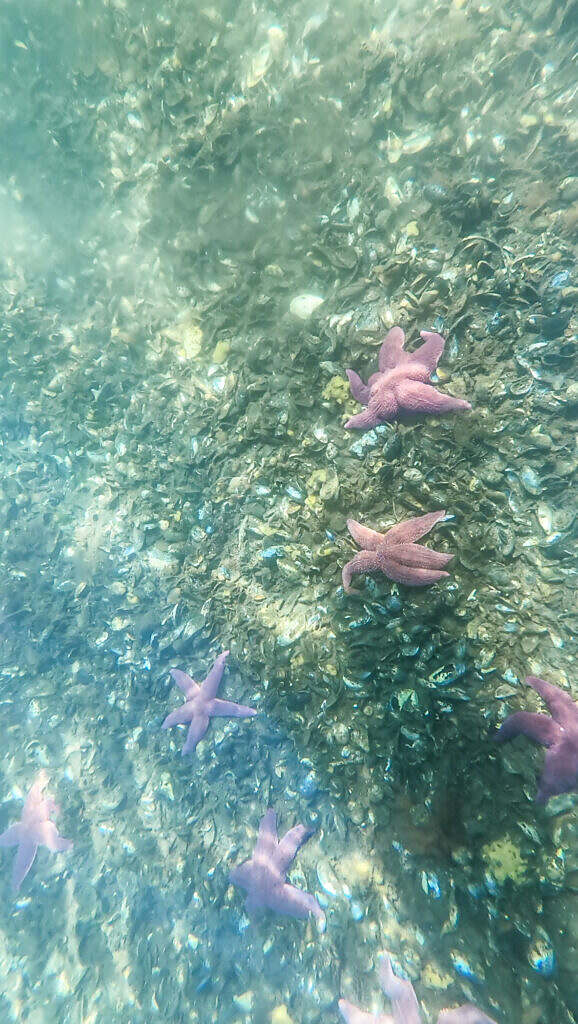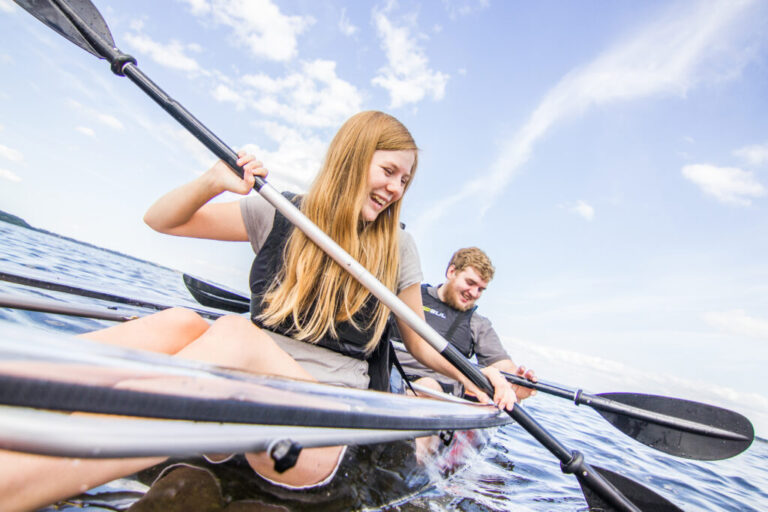Eelgrass
Eelgrass is an underwater flowering plant - and our very best friend in the fjord! The eelgrass is crucial for the entire ecosystem, as this is where fish fry, shrimps, small fish, and other small animals live, hatches, and grows. At the edge of the eelgrass, you can typically spot schools of tiny fish glistening in the sunlight - ready to swim hastily into the safety of the eelgrass if a predator were to pass by.
Eel grass is an underwater flowering plant - our best friend in the fjord! The eelgrass is beautiful when it tickles the bottom of your GLASS KAYAK® and is home to almost all life in the fjord. Here, crabs, shrimps, and small fish can hide from larger predators - unfortunately, the shrimps and small fish are not entirely safe in the otherwise protective forest of eelgrass, for the crabs also like to hunt in here and take those who are too slow. The eelgrass is essential for new fish fry to hide and grow. At the edge of the eelgrass, you can typically spot shoals of tiny fish glistening in the sunlight - ready to quickly swim into the safety of the eel grass if a predator by.
Eel grass grows in healthy water environments, so the fact that we have a lot of eel grass here at Marienlyst Strand is a really, really good sign. The eelgrass depends on sunlight, and the less nutrient pollution there is in the water, the fewer floating algae there are, and the more eelgrass there is. The eelgrass absorbs CO2 and nutrients from the bottom and releases oxygen to the water - and in this way, the eel grass contributes to the health of the fjord and oxygenates the water so that we reduce the risk of oxygen depletion.
Contrary to popular belief, eelgrass is not seaweed but a flowering plant. They spread both through lateral shoots and by sexual reproduction, meaning that the eelgrass flowers and sets seeds, just as we know it from grasses on land. The flowers sit in a membrane on the back of the stems and are without petals, so they are not flowers as we know them. On the other hand, the seeds are easy for you to experience on the trips at the right time of the year because if you put your hand in the water and feel and look at the back of the stems, you can see the tiny seeds sitting offset in pairs along the stem.

































